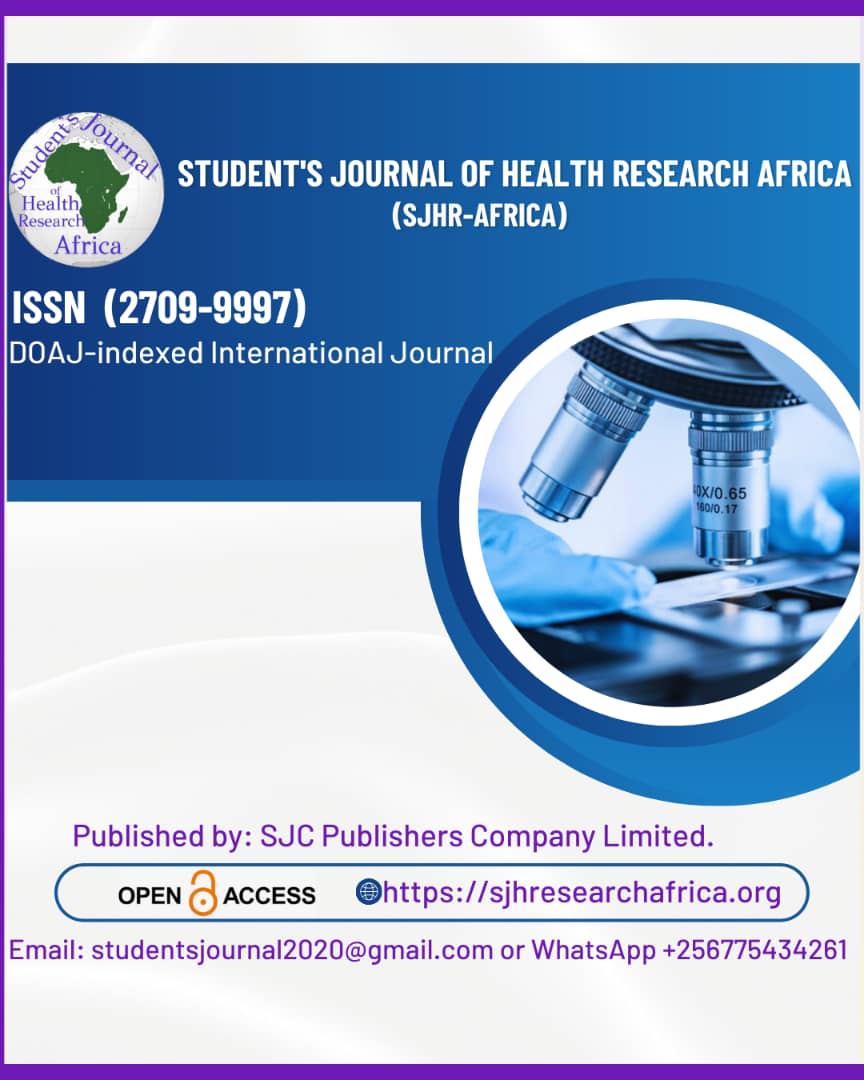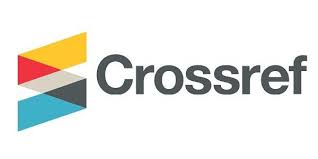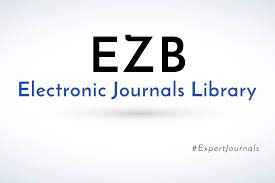FACIAL FILLERS IN AESTHETIC PRACTICE: PATIENT SATISFACTION AND OUTLINE OF COMMON ADVERSE EFFECTS: A CROSS-SECTIONAL STUDY
DOI:
https://doi.org/10.51168/sjhrafrica.v6i3.1642Keywords:
Dermal fillers, aesthetic procedures, patient satisfaction, facial augmentation, complicationsAbstract
Background
Dermal fillers are a popular non-surgical option for facial enhancement, offering affordability and minimal recovery time. They are widely used for volume restoration and wrinkle correction. Patient satisfaction is key to evaluating treatment success and psychological well-being. This study aims to assess patient satisfaction levels following dermal filler procedures and to evaluate the prevalence of common complications associated with these treatments.
Methods
A cross-sectional study was conducted at Narayan Medical College and Hospital, Sasaram, Bihar, India, from May 2023 to October 2024. A total of 100 medically eligible participants of both sexes aged 25 to 35 years were selected through convenience sampling, and data were collected using a structured questionnaire based on the Global Aesthetic Improvement Scale and WHO Quality of Life Questionnaire. Hyaluronic acid is used in our study for facial augmentations. Patient satisfaction, procedural details, and adverse effects were assessed, with follow-ups scheduled quarterly during our study period.
Results
The lips (34.5%) were the most common injection site, with 1 cc of filler being the most frequently used volume (40%). Mild to moderate complications were common, while severe reactions like necrosis were rare (0.5%). Satisfaction correlated with filler volume, with higher volumes leading to greater satisfaction. Most participants (70%) were willing to repeat the procedure, and 72% would recommend it.
Conclusion
Dermal fillers provide high patient satisfaction with minimal complications. Higher filler volumes and lip/malar injections yielded better outcomes.
Recommendation
The Utilization of hyaluronic acid in the treatment of the infraorbital hollow is recommended to facilitate the application of hyaluronidase for material dissolution in the event of adverse reactions.
References
Rzany B, Hilton S, Prager W, Hartmann V, Brandl G, Fischer TC, et al. Expert guidelines on the use of porcine collagen in aesthetic medicine. J Dtsch Dermatol Ges. 2010; 8:210-7. https://doi.org/10.1111/j.1610-0387.2009.07321_supp.x
Goldberg DJ. Legal ramifications of off-label filler use. Dermatol Ther. 2006; 19:189-93. https://doi.org/10.1111/j.1529-8019.2006.00073.x
Funt D, Pavicic T. Dermal fillers in aesthetics: an overview of adverse events and treatment approaches. Clin Cosmet Investig Dermatol. 2013; 6:295-316. https://doi.org/10.2147/CCID.S50546
Waldman A, Maisel A, Weil A, Iyengar S, Sacotte K, Llazaroff JM, et al. Patients believe that cosmetic procedures affect their quality of life: an interview study of patient-reported motivations. J Am Acad Dermatol. 2019; 80:1671-81. https://doi.org/10.1016/j.jaad.2019.01.059
Molina B, David M, Jain R, Amselem M, Ruiz-Rodriguez R, Ma M, et al. Patient satisfaction and efficacy of full-facial rejuvenation using a combination of botulinum toxin type A and hyaluronic acid filler. Dermatol Surg. 2015;41:S325-32. https://doi.org/10.1097/DSS.0000000000000548
Rzany B, Cartier H, Kestemont P, Trevidic P, Sattler G, Kerrouche N, et al. Full-face rejuvenation using a range of hyaluronic acid fillers: efficacy, safety, and patient satisfaction over 6 months. Dermatol Surg. 2012;38(2):1153-61. https://doi.org/10.1111/j.1524-4725.2012.02470.x
Fischer T, Sattler G, Gauglitz G. Lidocainhaltiger hyaluronfiller auf CPM®-Basis zur Lippenaugmentation. Hautarzt. 2016; 67:472-8. https://doi.org/10.1007/s00105-016-3779-1
Alegre-Sánchez A, Bernárdez C. A new nonhydrophilic agarose gel as subdermal filler for facial rejuvenation: aesthetic results and patient satisfaction. J Cosmet Dermatol. 2020; 19:1900-6. https://doi.org/10.1111/jocd.13529
Ali MJ, Ende K, Maas CS. Perioral rejuvenation and lip augmentation. Facial Plast Surg Clin North Am. 2007; 15:491-500. https://doi.org/10.1016/j.fsc.2007.08.008
Fernández-Cossío S, Castano-Oreja MT. Biocompatibility of two novel dermal fillers: histological evaluation of implants of a hyaluronic acid filler and a polyacrylamide filler. Plast Reconstr Surg. 2006; 117:1789-96. https://doi.org/10.1097/01.prs.0000214656.07273.b0
Liu MH, Beynet DP, Gharavi NM. Overview of deep dermal fillers. Facial Plast Surg. 2019; 35:224-9. https://doi.org/10.1055/s-0039-1688843
Winslow CP. The management of dermal filler complications. Facial Plast Surg. 2009; 25:124-8. https://doi.org/10.1055/s-0029-1220653
Moragas JMS, Reddy RR, Alfaro FH, Mommaerts MY. A systematic review of "filling" procedures for lip augmentation regarding types of material, outcomes, and complications. J Craniomaxillofac Surg. 2015; 43:883-906. https://doi.org/10.1016/j.jcms.2015.03.032
Lowe NJ, Maxwell CA, Patnaik R. Adverse reactions to dermal fillers. Dermatol Surg. 2005;31:1626-33. https://doi.org/10.2310/6350.2005.31250
Jain R, Huang P, Ferraz RM. A new tool to improve delivery of patient‐engaged care and satisfaction in facial treatments: the Aesthetic Global Ranking Scale. Journal of Cosmetic Dermatology. 2017 Mar;16(1):132-43. https://doi.org/10.1111/jocd.12297
Bech VN. The WHO Quality of Life (WHOQOL) questionnaire: a Danish validation study. Nordic journal of psychiatry. 2001 Jan 1;55(4):229-35. https://doi.org/10.1080/080394801681019075
De Almeida AT, Carruthers J, Cox SE, Goldman MP, Wheeler S, Gallagher CJ. Patient satisfaction and safety with aesthetic onabotulinumtoxinA after at least 5 years: a retrospective cross-sectional analysis of 4402 glabellar treatments. Dermatol Surg. 2015;41:S19-28. https://doi.org/10.1097/DSS.0000000000000275
Maisel A, Waldman A, Furlan K, Weil A, Sacotte K, Lazaroff JM, et al. Self-reported patient motivations for seeking cosmetic procedures. JAMA Dermatol. 2018;154:1167-74. https://doi.org/10.1001/jamadermatol.2018.2357
Bertucci V, Nikolis A, Solish N, Lane V, Hicks J. Subject and partner satisfaction with lip and perioral enhancement using flexible hyaluronic acid fillers. J Cosmet Dermatol. 2021;20:1499-504. https://doi.org/10.1111/jocd.13956
Geronemus RG, Bank DE, Hardas B, Shamban A, Weichman BM, Murphy DK. Safety and effectiveness of VYC-15L, a hyaluronic acid filler for lip and perioral enhancement: one-year results from a randomized, controlled study. Dermatol Surg. 2017;43:396-404. https://doi.org/10.1097/DSS.0000000000001035
Stojanović L, Majdić N. Effectiveness and safety of hyaluronic acid fillers used to enhance overall lip fullness: a systematic review of clinical studies. J Cosmet Dermatol. 2019;18:436-43. https://doi.org/10.1111/jocd.12861
Eccleston D, Murphy DK. Juvéderm® Volbella™ in the perioral area: a 12-month prospective, multicenter, open-label study. Clin Cosmet Investig Dermatol. 2012;5:167-72. https://doi.org/10.2147/CCID.S35800
Hoffman L, Fabi S. Look better, feel better, live better? The impact of minimally invasive aesthetic procedures on satisfaction with appearance and psychosocial well-being. J Clin Aesthetic Dermatol. 2022;15:47-58.
De Arruda LHF, Rocha FT, Rocha A. Studying the satisfaction of patients on the outcome of an aesthetic dermatological filler treatment. J Cosmet Dermatol. 2008;7:246-50. https://doi.org/10.1111/j.1473-2165.2008.00401.x
Downloads
Published
How to Cite
Issue
Section
License
Copyright (c) 2025 Anurag Kumar, Mahboob Alam, Kriti Yati

This work is licensed under a Creative Commons Attribution-NonCommercial-NoDerivatives 4.0 International License.






















